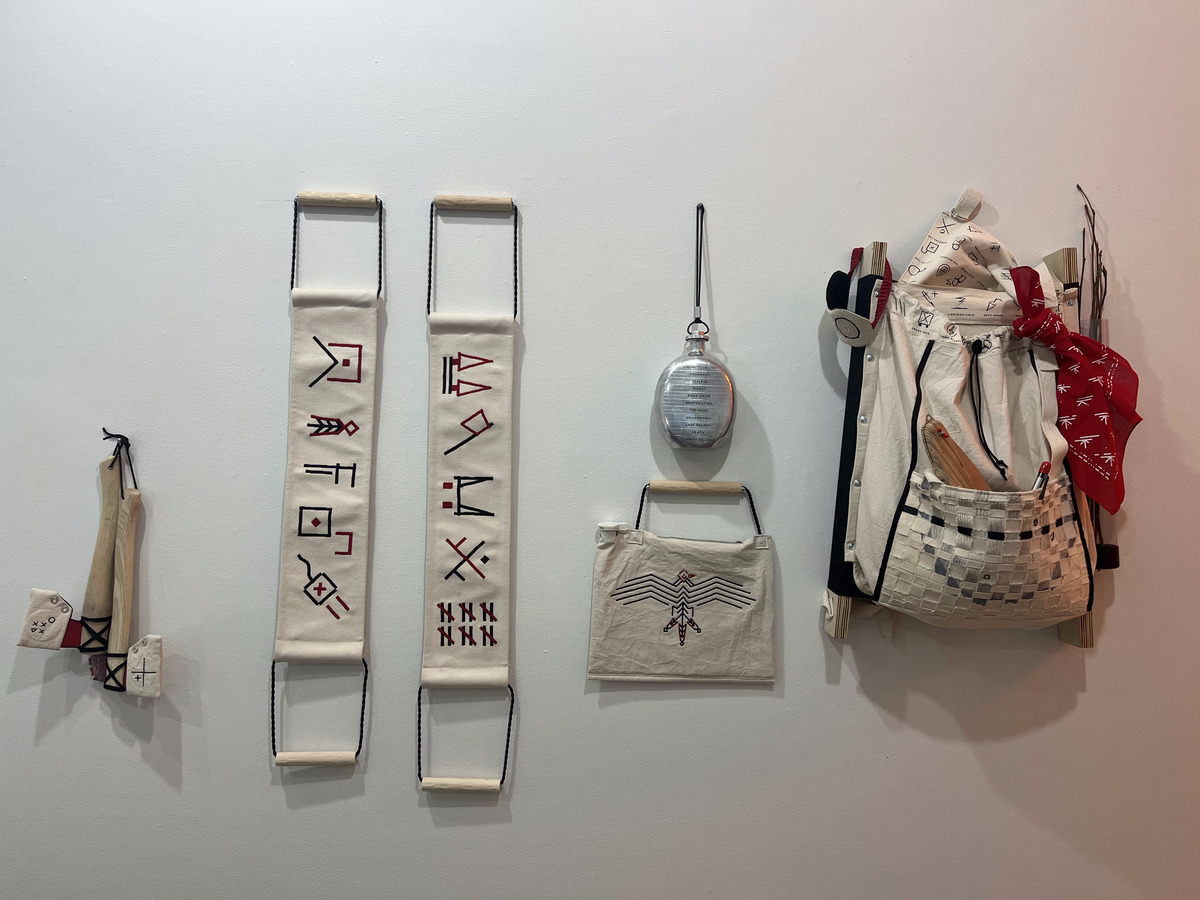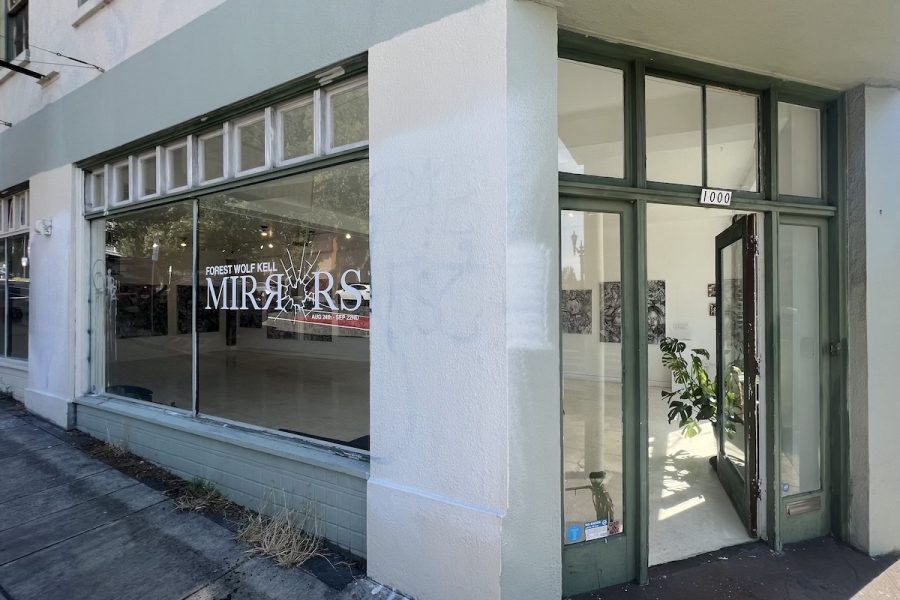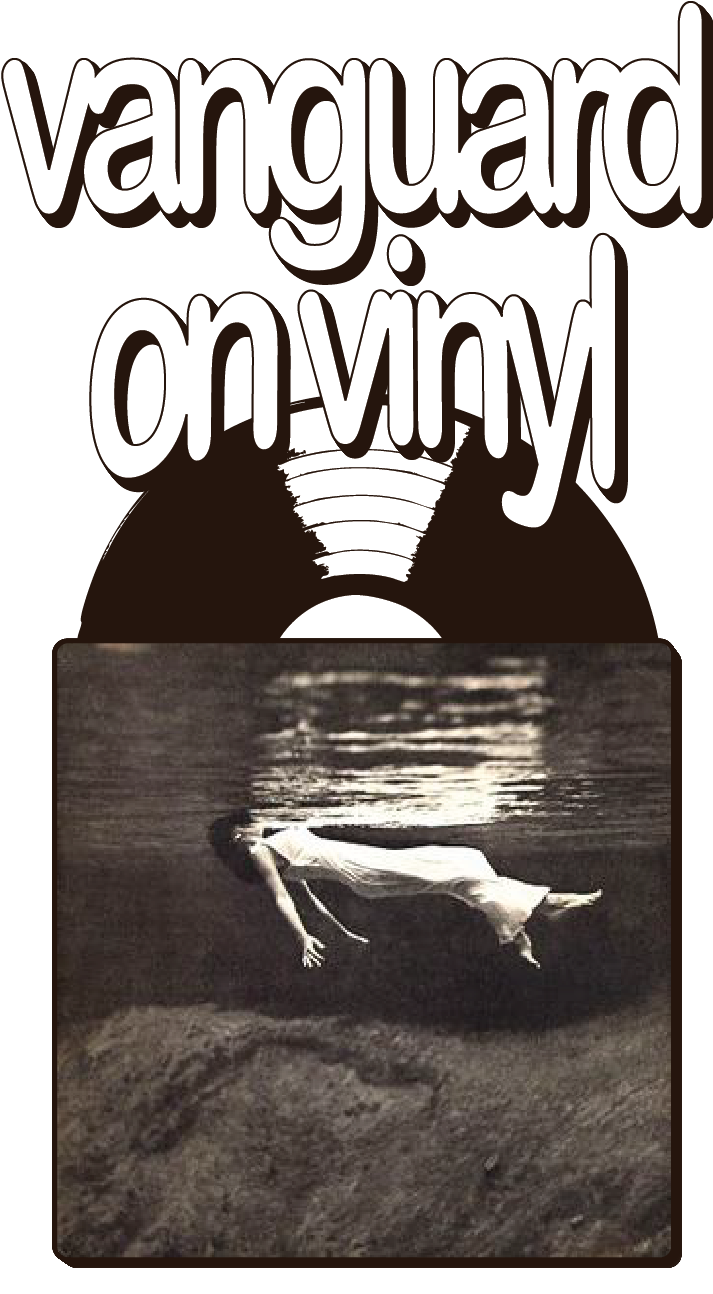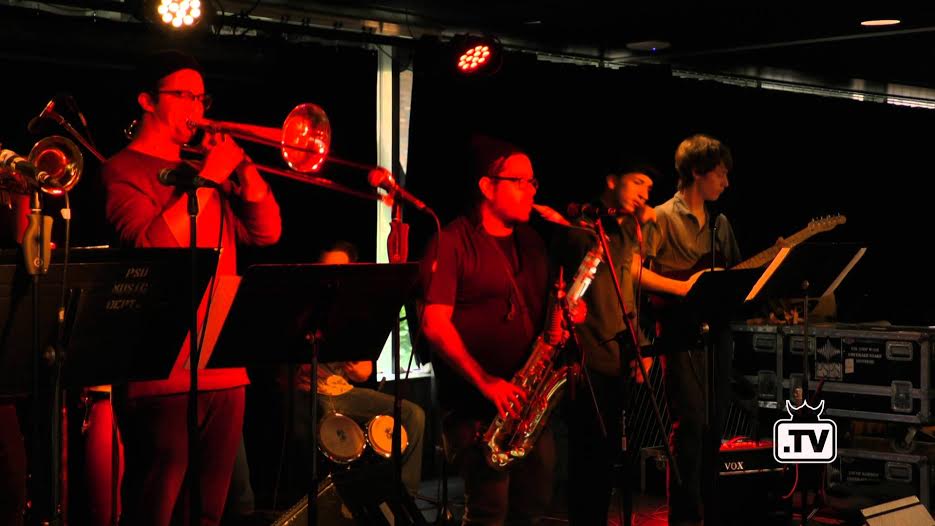An unexpected collection of objects welcomes visitors into a brightly lit gallery room through the streetside windows of Well Well Projects in North Portland.
A wooden dining room table with a curiously uneven surface is flanked by a green vest dangling from the ceiling. Laid out across half of the room is a massive pile of sticks, rocks, wool and other materials. In the corner is a heap of clay, which visitors are encouraged to add to the pile.
From the benefits of beavers to the materiality of forest products to the vulnerability faced by firefighters, the works adorning this gallery address separate but interconnected interests relating to wildland fire.
This is Holding Fire, an exhibition open until Oct. 1 which was organized by a collective of artists called Fuel Ladder. This group of colleagues, students, and educators based around the University of Oregon have organized this project to explore the socio-ecological landscape of the PNW.
Fuel Ladder describes itself as “a collective working at the intersections of contemporary art and climate,” whose goal is to “cultivate collaboration through practice-based research [and] engaging, on-the-ground experiences of climate crisis through the stories, metaphors and materials of wildfire in the Pacific Northwest and beyond.”
“In this show we’re not really answering anything, we’re just raising all these questions,” said Karin Bolender, a member of Fuel Ladder. “It’s valuable to bring people together in a space to talk through ideas and collaborate on questions, and not to say that a finished aesthetic object isn’t valuable, but there is value in processing together.”
Bolender’s contribution to the exhibition includes a video of paper shreds floating down streams against a forest backdrop, as well as a metal bucket with old western novels floating in the water.
This is part of a pulping performance—which Bolender has been carrying out over the past three years—where she tears up pieces of Pulp Western novels, leaves them in a creek and returns later to mine the pulp.
The word pulp in terms of genre—such as Pulp Fiction or Pulp Western—is named after the cheap wood paper used to manufacture a particular sensationalized literature in the first half of the twentieth century.
“I got really interested in the Pulp Western and the western as a narrative being about the way the land is possessed, and that being very much a reiteration of erasure of any kind of Indigenous presence on the land or any kind of Indigenous claim to the land,” Bolender said.
“I’ve been thinking about the materiality of the book, like the fact that the book itself is a forest product,” Bolender said. “You know, it is made out of the forest.”
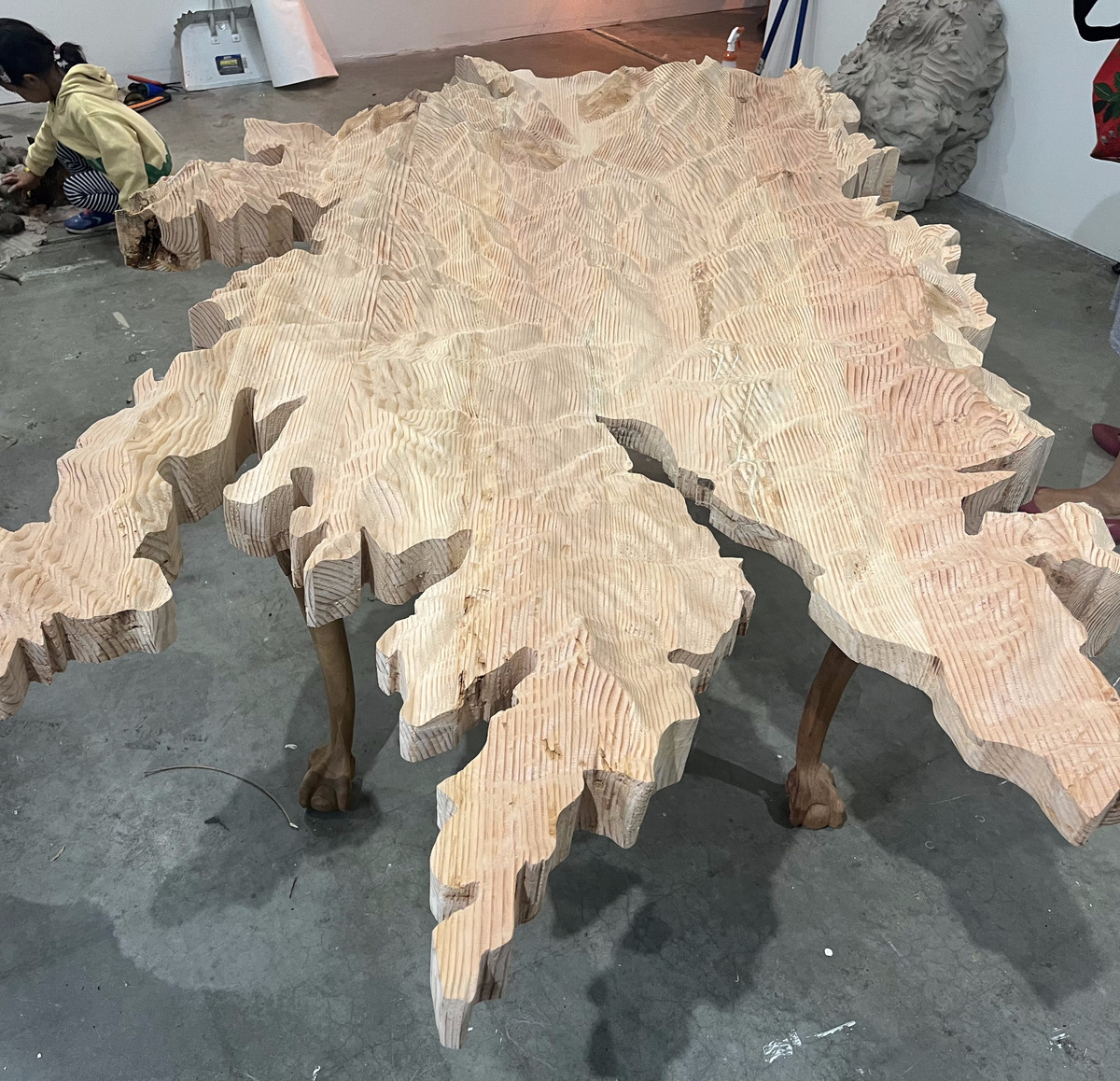
Upon returning to the sites to mine for the pulp, Bolender explained how “it was kind of comical, because I couldn’t actually tell if things were pulp or if they were bark, and I was like, ‘That might be the objective of this project.’ Acknowledging that it’s a material that came from the land, and what happens if we let it go back to the land in these ways?”
One of the main themes of Holding Fire is materiality. “What materials are we using?” Bolender said. “Where do they come from? How are we responsible to them in different ways?”
Another work highlighting ethical questions of material sourcing is the hanging vest, a textile product by Sasha Michelle White, titled “A Bellows, Part One—The Shelter Shirt.” This piece uses firefighting attire to address the risk and vulnerability faced by caretakers responsible for fire-prone environments.
“Regulation firefighting gear is made through a very toxic process, using carcinogenic solvents and synthetic polymers to create what are called aromatic polyamide or ‘aramid’ fibers,” White explained. “These fibers are supposed to be inert once processed, so inert that they don’t break down even in a landfill, but there’s evidence that the fiber may actually be carcinogenic.”
To contrast this, White has constructed “A Bellows” using a naturally fire-resistant material—silk dyed with the stem bark of tall Oregon grapes and recycled fabric from a defunct fire shelter.
White was also thoughtful in countering a working culture that excludes women by designing a garment made to fit female-presenting bodies, even though about 12% of wildland firefighters in the United States identify as women. In “what is still a machismo fire culture,” as White explained, women are “issued uniforms that are tailored to men, that don’t fit them and can increase stress and injury in what is already a dangerous job.”
Suspended across the room is another arrangement of textiles centered around firefighting. A wood-framed backpack, fabric eye mask and broad-handled straps are a few of the items displayed in the collection titled “Forest Fashion.”
Based on a cultural history of firefighting and backcountry hiking in the PNW, “these are all kind of reproductions or an iteration of things that would be part of a fire lookout’s tool pack, that they would have with them,” said Nancy Silvers, a collaborator in the project.
The items are adorned with symbols and shapes, each denoting an environmental message—such as potable water, swamp gas or landslide. This is the Environmental Wayfinding System, a re-imagined language of survival code designed to represent the socio-environmental legacy of the PNW.
Another piece in Holding Fire is a dining table called “Incident Table,” which has a surface resembling the topography of the 173,393-acre burn area left by the massive 2020 Holiday Farm Fire in Oregon.
“I just think about how much we interact with these maps online… and I wanted to make that more tangible and physical,” said Colin Ives, the artist behind this piece. Ives described the dining room table as an interface representing “the realities that we all sit around, whether we live directly in the valley or not.”
The Holiday Farm Fire destroyed hundreds of homes and businesses and devastated the infrastructure of Blue River and surrounding communities. Considering the direct effects of wildland fires and the ensuing smoke which impacts air quality throughout the western U.S. every year, it is understandable why the public would perceive wildland fires in an overwhelmingly negative light.
However, another intention of Holding Fire is to address the inevitability and necessity of wildland fires, which have always occurred naturally on the land. Many plant and animal species depend on fire—which clears out decaying matter and generates new growth—to maintain the natural harmony of an ecosystem.
While 85% of forest fires are man-made, and it is often necessary for human intervention to prevent excessive damage, suppressing fire completely would only harm the natural cycles of the environment and potentially lead to even larger fires due to the unnatural accumulation of debris.
Similarly, the large pile of materials which laid in the center of the gallery room paid homage to the duality of another harshly-judged feature of the environment—beavers. This structure is intended to mimic a beaver dam and is “trying to show people, because beavers are kind of considered a nuisance… [that] they’re actually really beneficial to landscapes,” Slivers said.
Oregon’s history reveals an aggressive approach to beavers. This keystone species nearly suffered extinction due to fur trapping and their perception as a nuisance to human interests. “In policy, it is still a hot topic, because they are blocking up irrigation and trenches,” Slivers said.
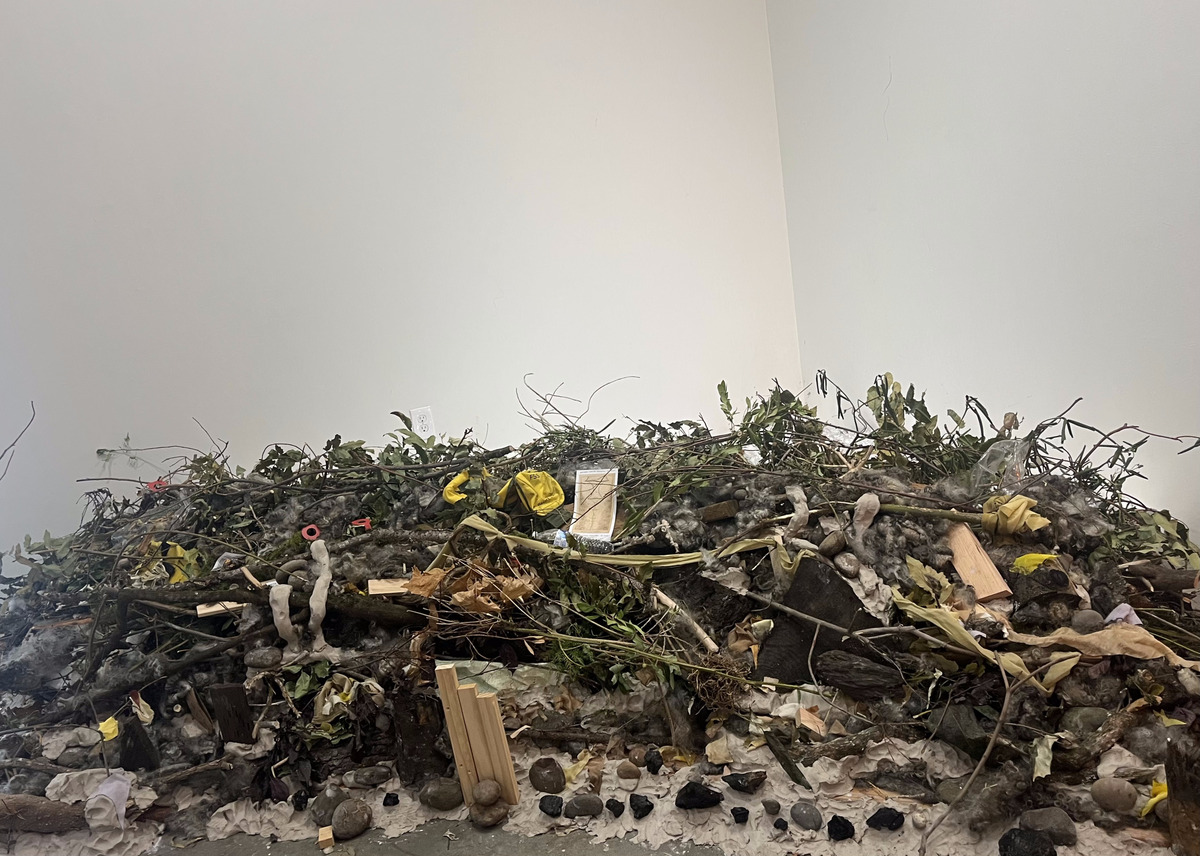
“Beaver Dam Analog” intends to highlight the many benefits of beavers, such as increasing the fire resistance of an ecosystem through building natural irrigation systems and forming refuge for other plant and animal species.
“The beaver can still be in a landscape but maybe not interact in a negative way with humans, but we need to keep advocating for the benefits that they bring,” Slivers said.
Holding Fire involves the community in a process of reflection and inquiry about our local ecology, encouraging viewers to participate in a collective experience of art-based discovery and research.
“Social practice art is very much like, ‘the product is the experience,’” Bolender said. “Particularly if you’re doing it with the community.”

